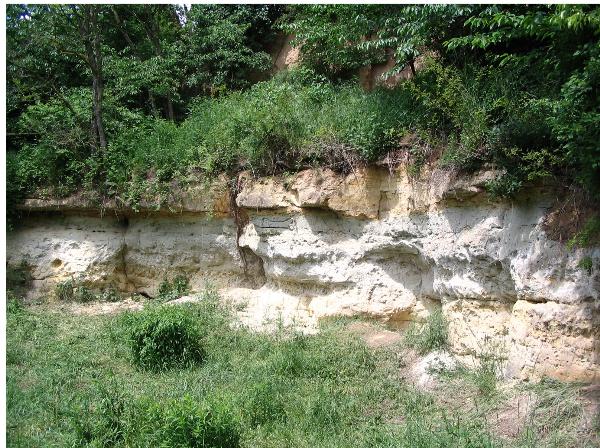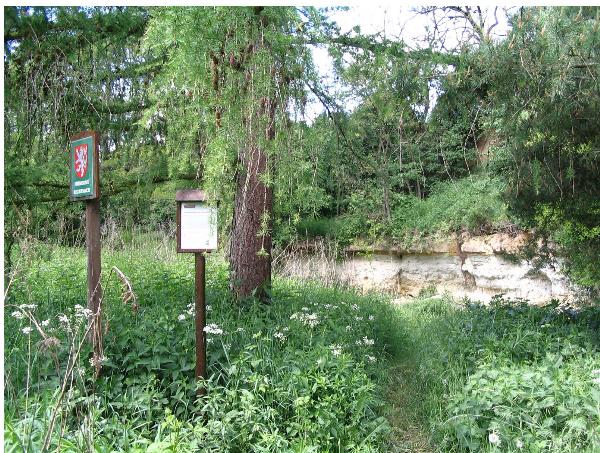Lom u Cervenych Pecek

Vitejte v Cervenych Peckach!
Tato jednoducha kes vas zavede na pozoruhodne misto o vymere 0,11 ha blizko vlakove zastavky Cervene Pecky (asi 100m). Roku 1977 bylo toto místo vyhlaseno prirodni pamatkou. Ucelem ochrany je zachovani bouroveho sedimentu ulozenin svrchnokridoveho more v casti byvale piskovny. Jedna se o mocny ustricny slap na pobrezi druhohorniho kridoveho more. Je to jedinecne paleontologicke naleziste zkamenelych, nekolik desitek milionu let starych, schranek ustric. Cely slap je nekolik metru vysoky, tvoren ve vrchni casti vapencem, ktery postupne prechazi ve spodnich vrstvach v piskovec.
Na misto se lze snadno dostat snad vsemi beznymi zpusoby, at uz pesky, na kole, autem (auto nechte stat u silnice) nebo dokonce i vlakem z Kolina.
pro uznani zalogovani kese bude potreba, abyste si z informacni cedulky na uvodnich souradnicich vypsali nektere dulezite udaje a odeslali zejmena pres formular, z ktereho se hned dozvite, zda jste odpovedeli spravne, případně na muj mail jirka.nadvornik@gmail.com, nebo zpravou pres profil.
A ted to bude jenom na vas
Zaslete mi, prosim, tyto odpovedi:
- Jak se jmenuji ustrice v latine?(rodove i druhove jmeno)
- Jak vysoka je stena opustene piskovny? (vice nez 3m)
- Jak stare jsou exemplare?
- no a nakonec pripojte k logu fotku vas + GPS s lomem nebo cedulkou.
Správné odpovedi beru jako samozrejmost, proto nebudu odepisovat. V pripade spatne odpovedi se vsak ozvu a budu velmi tvrde vyzadovat napravu ;-)
Preji hodne uspechu a vydareny vylet!
Prosim, nijak NEPOSKOZUJTE ustricovy slap a NEODLAMUJTE ustrice, na nasem uzemi ani nikde jinde se jiz nic podobneho nevyskytuje!!!

Welcome to Cervene Pecky!
This Earthcache gets you on a wonderful place 0,11 ha large, near local train station Cervene Pecky (about 100m). This place was proclaimed as natural monument in 1977. The object of protect is saving the "storm sediment of deposits of cretaceous sea" in a part of ex-sand pit. It is a great oyster quarry on a coast of the mesozoican cretaceous sea. Great storm came ninety million years ago and pilled the oysters up in the thick level of sand. The level of sand was so high, that millions of oysters died there and were fosilizated. This type of fosilization is one of the fastest. Nowadays, there is no sea, and this place is an excellent paleontological field of fossilized, a lot of millions years old oyster shells. Some shells are about 10cm large. Whole quarry is a few meters tall, made of the grey-colored calcite in the upper part, the yellow-colored sandstone in the lower parts and small flint stones (about 3cm), silicious sand in whole quarry.
You can get yourself to this location easily by bike, car(please, leave the car near the road), or by the train from Kolin.
To submit this Earthcache, you have to read the information schedule on the basic coordinates in the head of this listing, write some important notes and send it to my e-mail jirka.nadvornik@gmail.com
Now, it's your turn
Please, send me these answers:
- What is latin name of the oysters?
- How tall is the face of the sand pit?(more than 3m)
- How old are these oysters?
- And take the snapshot of you, your GPS device and the sand pit/schedule
I wish you a success and nice tour!
Please, DON'T DESTROY and DON'T BREAK the oysters, this is unique sand pit, you couldn't find something similar anywhere!!!
Cretaceous
Cretaceous was the longest (and the youngest) period of Mesozoic era. It took about 70 million years. We can divide it to 2 parts - Early Cretaceous (140-112) and Late Cretaceous (93,5-70). In Early cretaceous, Pangea, the first continent, fell to 2 continents - Gondwana and Laurasia.
In the beginning of Late Cretaceous, Gondwana started to fragment itself and the area of the sea became larger and larger. In the middle of Cretaceous (about 100 million years), was the sea level about 250m higher than nowadays. The temperature increased too. The life was various. The dinosaurs were at the most diverse, and insect such as ants, termites, butterflies and moths started to appear. Under the water level, the life was various too. Sharks, rays, starfish, oysters, plesiosaurus, mosasaurus etc were common animals. But about 98-88 million years, the temprature fell hardly down. This effect killed a lot of kinds of animals and plants.